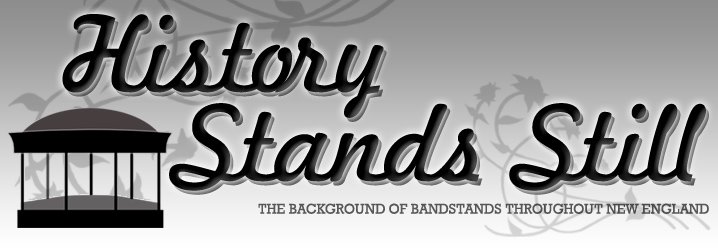BOSTON MA
The Parkman Bandstand
Boston Common
Built - 1912


The Boston Common is considered to be the very beginning of the park system in America since it was the earliest public green in 17th century Boston being mentioned in public records as early as 1634. It comprises 50 acres of open land and has served many purposes including military drills and training, recreational and the grazing of cattle. It was originally owned by William Blackstone who purchased the land in 1634 as a militia "training field' and for the "feeding of cattle." When the British Army occupied Boston, they used the land as their encampment.
In 1823 the rules pertaining to the use of the Common were enacted whereby no person was allowed to graze more than one cow at a time and by 1830, cows were completely forbidden in the area. Soon after, public amusement was always the primary attraction on the Boston Common where amusements remained for many years and the land was a favorite launching site for balloon flights. Traveling entertainment shows, puppet shows, telescopes, scales, blowing machines, booths selling gingerbread, spruce beer, lemonade and sugar plums and even a "Smokers Circle" were set up which became a fashionable spot for young ladies from the Beacon Hill area of the city.
But all was not fun and games on the Common since there were many hangings and whipings until the gallows were removed in 1817. Blacks were not allowed free access to the Common until July 4, 1836.
The Boston Common is 5-sided but with 3 long sides making it more of a triangle. Over the years many structures and areas of activities were added decreasing the open areas but one structure is cherished and that is the Parkman Memorial Bandstand which is located near the northeast corner of the Common. The structure was erected in 1912 by authority of the Honorable John F. Fitzgerald, Mayor and the City Council under the supervision of the Superintendent of the Public Grounds - D. Henry Sullivan and The Music Trustees - William C. Brooks, Chairman.
The bandstand was built as a memorial to George F. Parkman, a very generous benefactor of the Boston Park System and was designed by the Boston firm of Derby, Robinson and Shepard. It was built with funds from the Parkman Trust.
The bandstand is a neo-classical structure and appears to be a modified copy of the Temple d'Amour at the Petit Trianon, Versailles, France and was built with pink Knoxville Marble. It has been also made handicapped accessible and now stands as an architectural centerpiece in the Common. It has synnetrical walkways, trees and benches.
The bandstand held host to many concerts in the past but now is only occasionally used as a bandstand but is more of an eyeful attraction and meeting place on this historical Boston Common area.

No comments:
Post a Comment